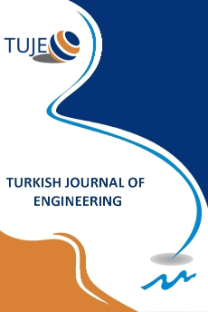Investigation of the discharge flow rate patterns at real-time traffic signal control intersections
Investigation of the discharge flow rate patterns at real-time traffic signal control intersections
Real-time managed intersection, Queue length Green time, Time headway, Discharge flow rate,
___
- Khosla, K., & Williams, J. C. (2006). Saturation flow at signalized intersections during longer green time. Transportation Research Record, 1978 (1), 61-67.
- Denney, Jr. R. W., Curtis, E. & Head, L. (2009). Long green times and cycles at congested traffic signals. Transportation Research Record, 2128 (1), 1-10.
- Lin, F. B. & Thomas, D. R. (2005). Headway compression during queue discharge at signalized intersections. Transportation Research Record, 1920 (1), 81-85.
- Stanić, B., Tubić, V. & Čelar. N. (2011). Straight lane saturation flow and its rate in Serbian cities. Transport, 26 (3), 329-334.
- Chaudhry, M. S. & Ranjitkar, P. (2013). Capacity and signal timing analysis of signalized intersections with increasing saturation flow rate. Transportation Research Board 92nd Annual Meeting (No. 13-3396).
- Dey, P. P., Nandal, S. & Kalyan, R. (2013). Queue discharge characteristics at signalised intersections under mixed traffic conditions. European Transport, 55(7), 1-12.
- Tanyel, S., Koyuncu, M. & Çaliskanelli, S. P. (2018). Sürücü davranışlarının sinyalize kavşak başarımı üzerindeki etkisi. Teknik Dergi, 29 (5), 8563-8588.
- Li, H. & Prevedouros, P. D. (2002). Detailed observations of saturation headways and start-up lost times. Transportation Research Record, 1802 (1), 44-53.
- Day, C. M., Sturdevant, J. R., Li, H., Stevens, A., Hainen, A. M., Remias, S. M. & Bullock, D. M. (2013). Revisiting the cycle length: Lost time question with critical lane analysis. Transportation Research Record, 2355(1), 1-9
- Gao, L. & Alam, B. (2014). Optimal discharge speed and queue discharge headway at signalized intersections. In 93rd Annual Meeting of Transportation Research Board, CD-ROM. Washington, DC, United States.
- Transportation Research Board (TRB) (2010). Highway capacity manual (5th Edition). Washington, D.C.: Transportation Research Board, National Research Council.
- Cohen, S. L. (2002). Application of car-following systems to queue discharge problem at signalized intersections. Transportation Research Record, 1802(1), 205-213.
- ISSN: 2587-1366
- Yayın Aralığı: 4
- Başlangıç: 2017
- Yayıncı: Mersin Uüniversitesi
Investigation of acceleration on non-structural building elements under earthquake effect
Mustafa Halûk SARAÇOĞLU, Ahmet ÖZKAYA
Fuad ALHAJ OMAR, Nihat PAMUK, Ahmet Afşin KULAKSIZ
Esra SARAÇ EŞSİZ, Vahide Nida KILIÇ, Murat OTURAKÇI
A combined approach of base and meta learners for hybrid system
Abdul Ahad ABRO, Waqas Ahmed SIDDIQUE, Mir Sajjad Hussain TALPUR, Awais Khan JUMANİ, Erkan YAŞAR
Evaulation of renewable energy source alternatives prioritization
Barış KANTOĞLU, İrem DUZDAR ARGUN
Investigation of the discharge flow rate patterns at real-time traffic signal control intersections
Nihat Can KARABULUT, Murat ÖZEN, Oruç ALTINTAŞI
Comparison of online and face-to-face exams conducted in Physics I course in higher education
